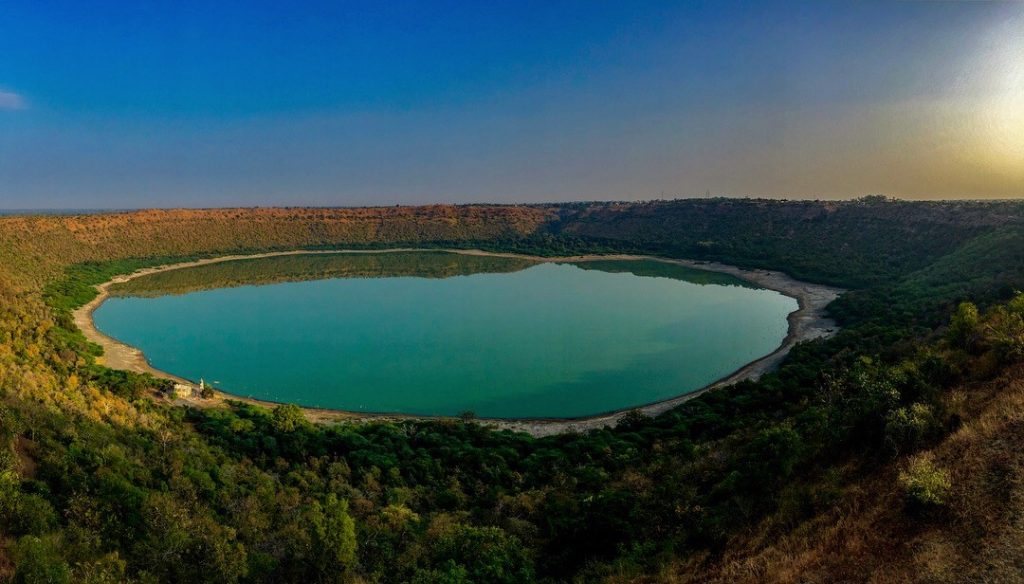Lonar Lake: A 50,000-Year-Old Meteor Impact Crater in Maharashtra with Color-Changing Waters, Magnetic Anomalies, and Mythological Roots

Lonar Lake: A 50,000-Year-Old Meteor Impact Crater in Maharashtra with Color-Changing Waters, Magnetic Anomalies, and Mythological Roots
Tucked away in Maharashtra’s Buldhana district, Lonar Lake isn’t just a scenic natural site—it’s a 50,000-year-old impact crater, born from a high-speed meteor collision with Earth. This rare saltwater lake continues to fascinate scientists, mystics, and travelers alike with its otherworldly features and enduring legends.
A Crater from the Cosmos
Formed during a meteor impact in the Deccan Plateau, Lonar Lake is one of the world’s only hyper-velocity impact craters on basalt rock. Measuring 1.2 kilometers wide and 150 meters deep, it offers an exceptional glimpse into Earth’s geological history. Its waters are highly saline and alkaline—seven times saltier than the ocean—making it a unique natural laboratory for researchers.
A Lake That Changes Color
Perhaps the most mesmerizing trait of Lonar Lake is its seasonal color shift. Typically green, the lake turns a brilliant pink during summer months, especially around June. This change is due to the activity of specific microorganisms that release pigments in response to the saline environment. It’s nature’s own light show—beautiful, unexplained, and fleeting.
The Compass Conundrum
One of the lake’s strangest quirks is its interference with magnetic instruments. Compasses and GPS devices tend to behave erratically near the lake, likely due to the magnetic properties of the minerals in its basin. Even today, scientists continue to study this phenomenon, which only deepens the lake’s aura of mystery.
Wildlife Haven
Beyond its scientific significance, Lonar is also a sanctuary for wildlife. The lake’s surroundings are rich with flora and fauna, attracting migratory birds such as herons, magpies, and shell ducks. Monitor lizards and other reptiles also call it home, making it a lively habitat amidst its ancient stillness.
Where Myth Meets Science
According to local legends, Lonar Lake was formed when Lord Vishnu struck down a demon, creating the crater with divine force. The nearby Daitya Sudana Temple, a relic from the Chalukya period, celebrates this tale. Some stories even say Lord Ram and Sita passed by the lake during their exile, linking it further with India’s spiritual lore.
A Wonder in Peril
Despite its grandeur, Lonar Lake faces modern threats—pollution, agricultural runoff, and littering continue to damage the delicate ecosystem. Recognized as a National Geo-heritage Monument by the Geological Survey of India, conservation efforts are ongoing. Still, much work remains to ensure its survival for future generations.
Earth’s Timeless Echo
Lonar Lake is more than just a natural marvel—it’s a geological time capsule, a cultural landmark, and a scientific enigma. Whether you’re an explorer, a history lover, or a seeker of the unexplained, the lake stands ready with its secrets, waiting to be discovered in every shimmering ripple.












